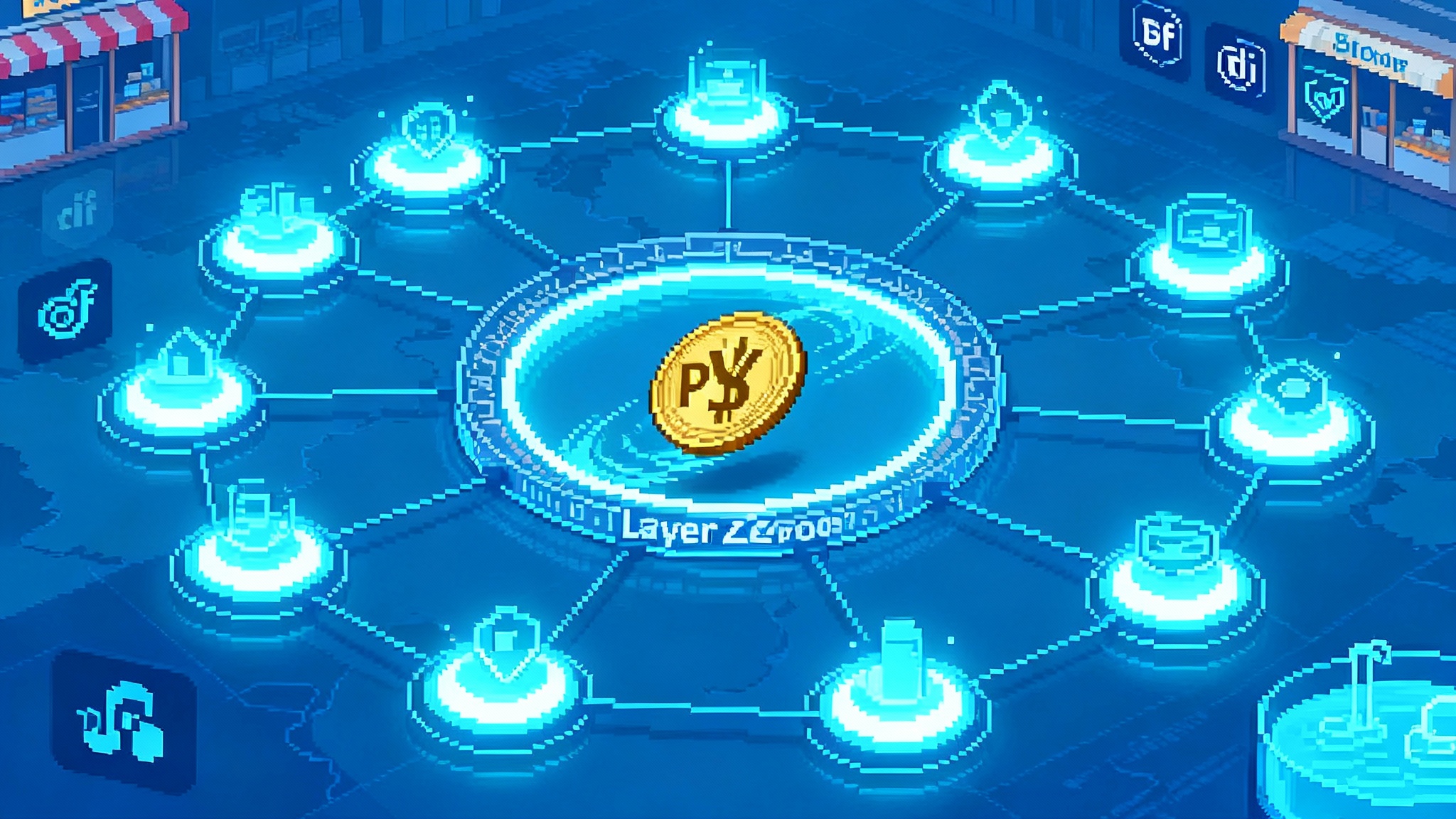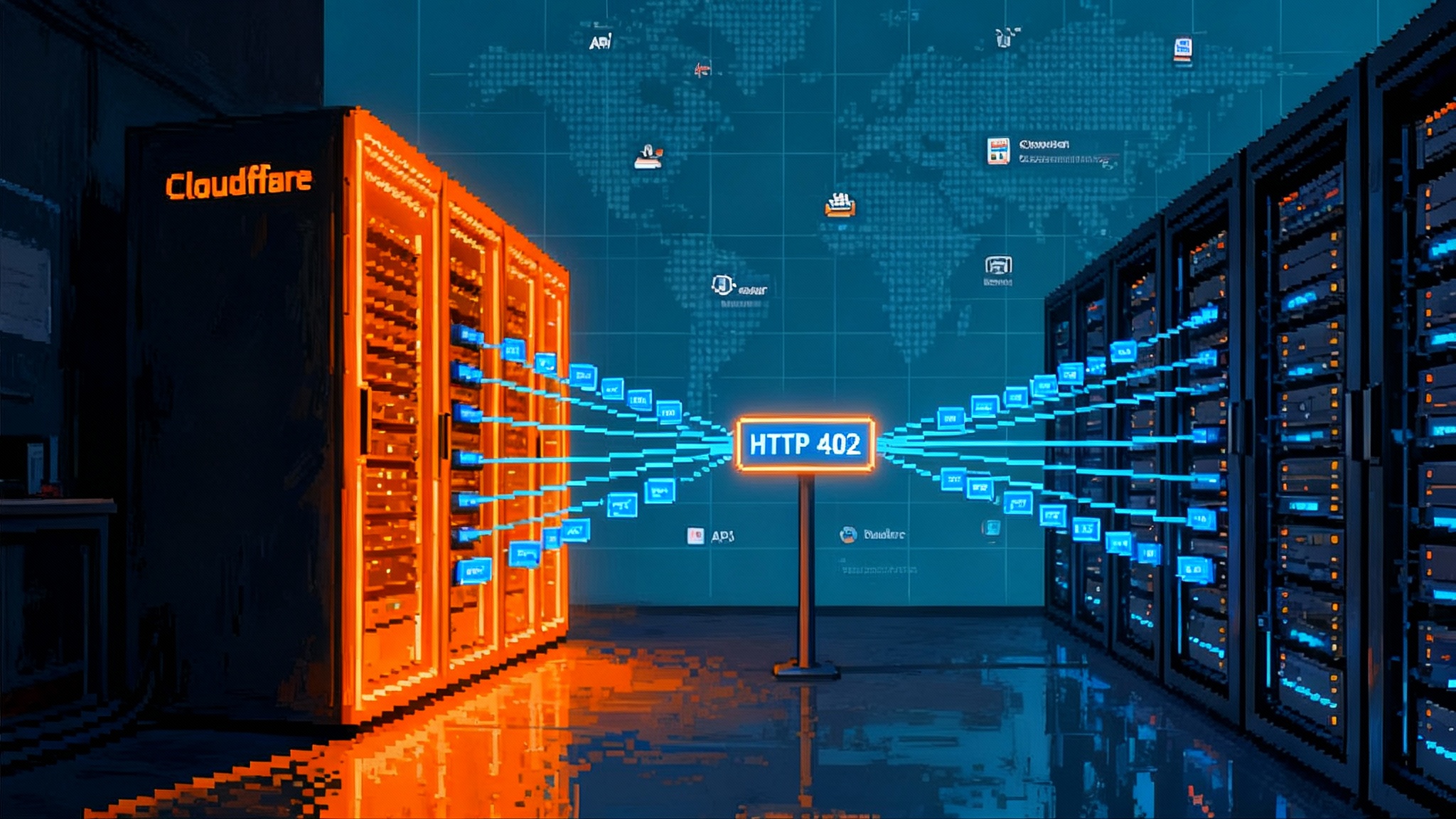PayPal's PYUSD goes omnichain with LayerZero's PYUSD0
On September 18, 2025, PayPal’s PYUSD jumped to nine new networks via LayerZero’s PYUSD0. Here is why omnichain distribution could change payments and DeFi, and the signals to watch next.

What changed on Sept 18, 2025
On Sept 18, 2025, PYUSD took a decisive step beyond its native networks by arriving on nine additional chains through LayerZero’s omnichain framework. The extension, referred to as PYUSD0, gives wallets, exchanges, DeFi protocols, and merchants access to a single stablecoin that can move across many execution environments with minimal friction. For everyday users, the headline is simple. You can hold PYUSD and reach more apps and lower fees without leaving the PayPal and Paxos asset brand you recognize. Under the hood, this is a notable experiment in how a regulated dollar token can grow distribution without the issuer standing up a new native contract on every chain.
Two ideas sit at the core. First, LayerZero’s OFT model allows a token to exist as a single canonical supply that teleports between chains by burn and mint rather than locking a pile of the asset on one chain and issuing a synthetic on another. Second, Stargate Hydra focuses on providing the liquidity plumbing and routing that make those teleports predictable for users who simply want funds on chain X to appear on chain Y at an expected cost and time. Together, they let PYUSD span more chains with fewer operational knobs for each new network.
Why omnichain matters for a payments stablecoin
Payments work when the asset is where the user wants to spend. In crypto, that means two things. The token must be available on the chain that hosts the application or merchant checkout, and the chain itself must be affordable and fast enough to make small purchases feel instantaneous. Native issuance on each chain is one route, but it multiplies contracts, governance, and upgrade work. Omnichain distribution simplifies the surface area while pushing access closer to where activity is.
For PYUSD, the pitch is direct. If consumers can move their balances quickly to low fee environments, tap DeFi for yield or working capital, and bring those dollars back to higher security environments when needed, PYUSD becomes a bigger part of both crypto trading and everyday spending. For merchants, acceptance improves when settlement arrives on the chain they prefer without juggling multiple wrapped variants that create reconciliation headaches. Competitive dynamics across dollar tokens matter here too, as explored in Tether’s $500B stablecoin bid.
How PYUSD0 works in practice
Think of PYUSD0 as an extension rail rather than a new issuer contract. When a user sends PYUSD from a supported source chain to a destination chain, the OFT mechanism burns on the origin and mints on the destination. Messaging between chains is handled by LayerZero endpoints that pass proofs and instructions. Hydra coordinates liquidity so the user’s experience feels like a single hop from A to B.
This differs from the classic locked bridge pattern. With lock and mint, a reserve sits in a vault on chain A while a representation circulates on chain B. That representation can drift from the canonical asset if the bridge is compromised or paused. With OFT burn and mint, the total supply remains unified across chains. It still introduces cross chain messaging risk and contract risk, but it avoids stranded pools of collateral and the proliferation of wrapped tickers that confuse users and integrators.
From an integration standpoint, developers on each new chain see a straightforward token that follows stablecoin conventions. They do not need to run bespoke relayers or manage their own liquidity reserves. Users see a consistent ticker in their wallet and can bridge inside supported apps without switching to a separate bridge interface.
Distribution and liquidity effects
Omnichain distribution usually amplifies a token’s surface area in three ways.
-
Exchange and wallet coverage. Listing a token that arrives on nine additional chains increases the number of native interfaces where users can on ramp, swap, and send. Large wallets can route PYUSD across chains as part of a quote, making the token feel present even where it does not have deep local pairs yet.
-
DeFi market depth. Market makers can seed pairs on multiple DEXs at once and rebalance inventory by bridging rather than unloading inventory into thin on chain books. Hydra’s liquidity coordination can reduce the need to maintain fragmented pools on every route. Over time, that can tighten spreads and shrink the penalty for moving between ecosystems. The broader shift toward unified liquidity and routing mirrors patterns noted in Aave V4 hub and spoke reset.
-
Merchant settlement optionality. A merchant that prefers settlement on a low fee L2 can accept PYUSD on an L1 at checkout and receive PYUSD on the L2 during settlement. This unlocks new checkout paths without asking the buyer to manage chain selection. More paths mean higher effective acceptance.
There are natural second order effects. Liquidity mining and rewards can be consolidated into omnichain gauges rather than siloed programs that pit chains against one another. OTC desks can quote one coin with many delivery venues. And arbitrage bands narrow when moving the asset between venues is a one click, predictable action. The growing role of exchange native and DEX native dollars, like the DEX-native stablecoin moment on Hyperliquid, adds further pressure for tight cross chain pricing.
Adoption tailwinds merchants and consumers will notice
Stablecoin adoption often depends on simple economics and fewer steps.
-
Lower fees on popular L2s and app chains make microtransactions viable. If PYUSD can reach chains where a payment costs a few cents and confirms in seconds, it becomes a reasonable option for in app purchases, small creator payouts, and peer to peer payments that compete with closed networks.
-
Exchange and commerce incentives set expectations. The industry has seen fee waivers for stablecoin conversions and for on chain payments that route through a preferred L2. When a large platform discounts the act of acquiring and using a dollar token, usage jumps. An omnichain PYUSD is in position to capture those spikes because it meets users wherever those incentives send traffic.
-
Wallet and checkout simplification removes cognitive load. Users do not want to memorize which wrapped version of a stablecoin is the right one for a given app. A single omnichain ticker that shows up consistently across chains lowers refusal at checkout and makes it easier for support teams to resolve issues.
-
Gas abstraction and sponsored transactions help the last mile. If apps can sponsor gas or let users pay fees in PYUSD on supported chains, a new user can go from airdropped balance to completed payment without hunting for native gas tokens. Omnichain liquidity makes that sponsorship easier to fund and rebalance.
Security and trust tradeoffs to understand
Expanding a regulated stablecoin beyond native issuer contracts is not free. The risks cluster in several layers.
-
Messaging and endpoint risk. Cross chain communication is the critical path. If messages can be spoofed or delayed, mint and burn semantics can break or pause. Users should favor routes that have undergone public audits, adversarial testing, and production battle time. Operators should maintain rapid pause controls and clear incident runbooks.
-
Contract and upgrade risk. Omnichain tokens rely on contracts that often are upgradable so they can add new chains or patch bugs. Upgradability is a double edged sword. It allows fixes, but it creates governance keys that must be well protected and clearly documented. Publishing timelocks, roles, and emergency procedures builds trust.
-
Custody and integration risk. Exchanges, custodians, and DeFi protocols that list the token on new chains must update risk models. Collateral factors, liquidation sources, and oracle routes should reflect omnichain movement. A lending market should not assume that withdrawal capacity equals depth on a single chain when users can migrate supply elsewhere in minutes.
-
Usability versus provenance risk. A bridged extension can look identical to a native token in a wallet, but under the hood it follows different administrative rules. Merchants and treasurers should record which chain and which contract they hold so they can respond if an extension is paused or if a policy change affects redemptions on a subset of chains.
None of these risks are unique to PYUSD. They apply to any large asset that scales distribution through cross chain systems. What matters is clarity. Who can pause? Who can upgrade? What happens if a chain reorgs or halts? The more explicit the answers, the faster large integrators will be comfortable elevating limits and enabling direct deposits and withdrawals.
Native issuance versus permissionless extensions
There is a philosophical and practical tradeoff between native issuance and permissionless extension.
-
Native issuance means the issuer deploys a contract on a chain and accepts full responsibility for mint, burn, freeze, and redemption there. It carries the strongest provenance and usually the cleanest compliance posture, but it takes time and operational overhead for every additional network.
-
Permissionless extension means an independent system moves the canonical asset across chains under a defined security model. It scales faster and can serve new ecosystems without an issuer standing up new infrastructure. The tradeoff is an added layer of technical trust and policy complexity between the issuer and the end user on those new chains.
In practice, many large stablecoins follow a hybrid path. Issue natively on one or two foundational chains where custody and institutional settlement live. Use an omnichain bridge for reach into long tail environments where fees are lowest and experimentation happens. If a given chain proves durable and strategically important, the issuer can later add native issuance there to retire the extension risk. PYUSD’s move through PYUSD0 fits this playbook.
Compliance considerations that still govern the dollar
Stablecoins are programmable, but their obligations are not. The core compliance pillars remain in force across an omnichain footprint.
-
Sanctions and blocklists. Issuers and regulated partners maintain controls that can block known bad actors from using their tokens. Extensions may implement their own blocklists or accept directives from the issuer via messages. The details should be public so integrators understand how final settlement behaves under edge cases.
-
Travel rule and VASP obligations. When funds move between custodial platforms, the usual information sharing rules apply regardless of which chain carried the transfer. An omnichain token does not change that. It does, however, make it more likely that the sender and receiver are on different chains, so compliance teams must be comfortable matching chain provenance to their casework.
-
Consumer protection. Refunds, chargebacks at the processor level, and dispute handling need clear playbooks for cross chain scenarios. A merchant who accepted PYUSD on chain A but settled on chain B should be able to unwind a transaction through a predictable policy path.
-
Transparency into reserves and flows. The reason stablecoins are trusted is because their reserves and redemptions are transparent. Omnichain movement adds one more dimension to monitor, but it does not replace the need for frequent attestations and robust disclosure about how supply changes map to real dollars.
What success looks like in the data
To cut through headlines, watch the following metrics over the next 6 to 12 months.
-
Circulating supply growth. If PYUSD’s total outstanding climbs while redemptions remain orderly, the market is absorbing the new reach. Flat or shrinking supply would suggest omnichain access is not yet bending the curve.
-
On chain transfer volume by chain. Look for rising median transfer sizes and counts on the new chains. Healthy growth would show a mix of small consumer payments and larger treasury moves. A spike of wash like activity with thin user counts is less meaningful.
-
Exchange and custodian integrations. Track direct deposit and withdrawal support for PYUSD on the additional chains, not just internal crediting via off chain moves. When a major exchange enables native deposits on an L2, it signals operational comfort.
-
Merchant acceptance and settlement preference. Watch how many payment processors add PYUSD checkout and which chains they recommend by default. If settlement defaults to low fee L2s and stays there, that is a strong adoption marker.
-
DeFi collateralization and risk parameters. Lending markets that assign real collateral factors to PYUSD on new chains are voting with risk budgets. Observe how quickly those limits rise and whether they converge across chains.
-
Bridge reliability metrics. Mean time to finality, variance in completion time, and the share of transfers that require manual intervention are key. A working payments rail values boring repeatability over occasional speed records.
-
Spread convergence across venues. Narrower gaps between prices on different chains indicate that arbitrage and inventory management are working. If spreads widen during stress, integrators may need to recalibrate routing or increase buffer liquidity.
-
Contract transparency and governance clarity. Over time, expect public dashboards for roles, timelocks, and pause status. Publishing these artifacts reduces integration friction and speeds up approvals for institutions.
Practical guidance for teams integrating PYUSD post rollout
-
For developers. Treat PYUSD as a single asset with a defined set of supported chains. Use routing SDKs or aggregator APIs that can quote cross chain swaps and transfers. Store contract addresses and chain IDs in a single registry service so your front end shows users the exact token they will receive.
-
For treasurers. Maintain a chain aware ledger. Record chain and contract for every balance and build policy that caps exposure by chain. During the early months, keep slightly higher cash buffers to absorb delays or pauses without operational stress.
-
For merchants. Start with the chain your commerce platform already supports with stable fees. If your payment processor supports multi chain settlement, default to the environment that minimizes gas costs and reconciliation time. Consider offering small discounts during launch to nudge behavior toward preferred rails.
-
For risk teams. Request attestation on emergency controls, upgrade procedures, and monitored endpoints. Establish alerting for unusual pause events and finalize your exception handling before volumes climb.
What to watch next
Omnichain distribution only matters if it changes how people use money online. The next checkpoints are straightforward. Do major exchanges and wallets treat PYUSD as a first class cross chain asset with visible routes and one click transfers. Do payment processors recommend PYUSD for settlement where fees are lowest. Do DeFi protocols include PYUSD in core pools on the new chains rather than as an afterthought.
If the answer to these questions is yes, expect a flywheel. Distribution brings liquidity, liquidity enables better pricing, better pricing improves checkout and treasury flows, and those flows justify deeper integrations. At that point, the distinction between native issuance and omnichain extension fades for most users. They simply see a dollar that goes where the internet needs it to go.
The Sept 18 rollout is not the finish line. It is the moment PYUSD steps from a two chain origin into a many chain reality. If the teams behind the plumbing keep execution boring and the institutions around the asset maintain transparency and policy clarity, this is the kind of infrastructure change that quietly unlocks the next million daily stablecoin payments.








